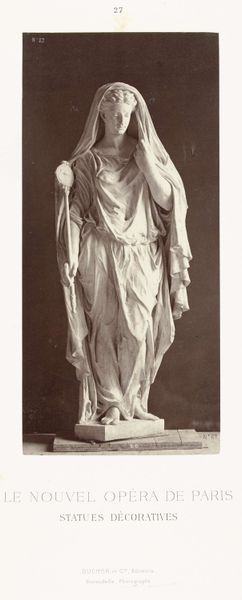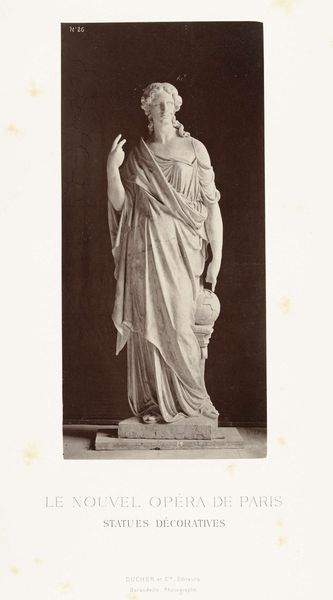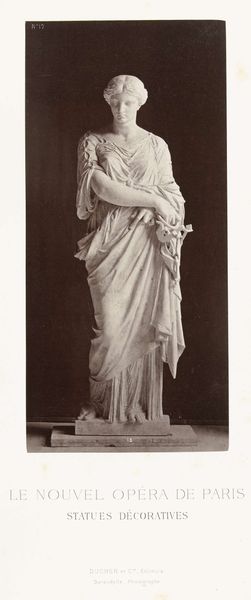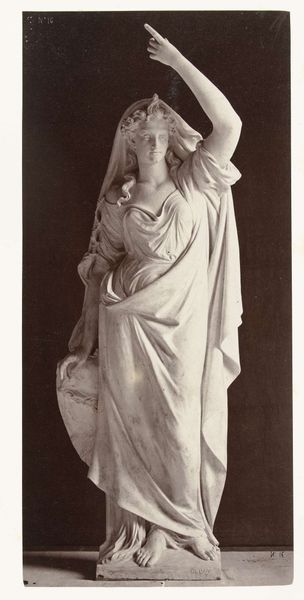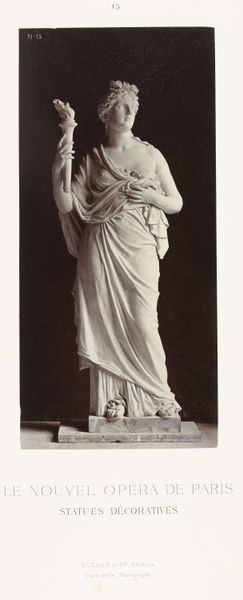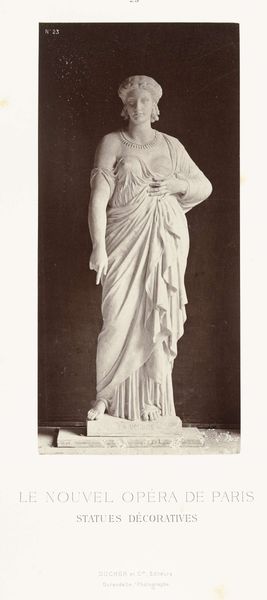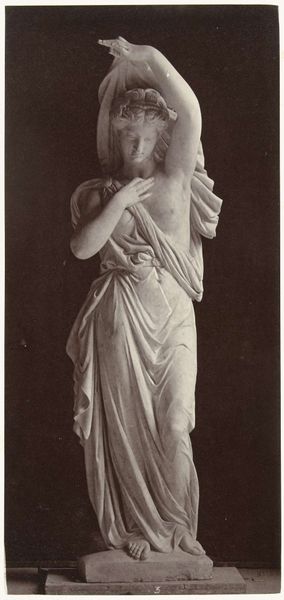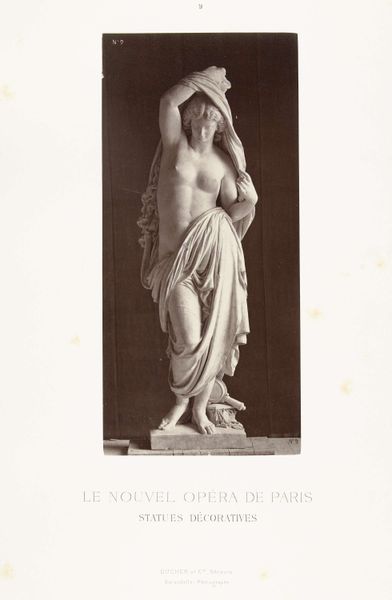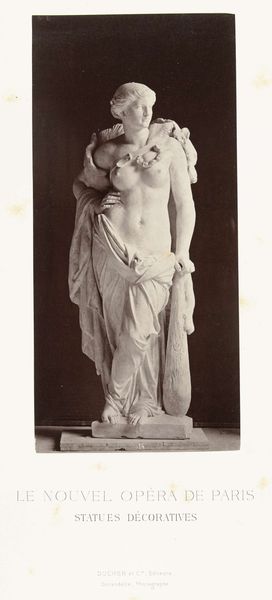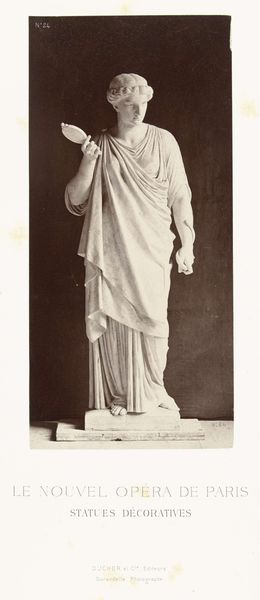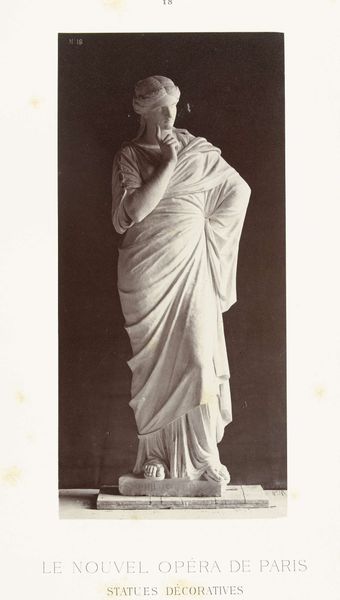
Marmeren beeld van een vrouw in een gewaad met een ontblote borst, in haar linkerhand draagt zij een lauwerkrans, in haar rechter een scheepsanker. c. 1878 - 1881
0:00
0:00
Dimensions: height 275 mm, width 128 mm, height 620 mm, width 438 mm
Copyright: Rijks Museum: Open Domain
Editor: This photograph, taken by Louis-Emile Durandelle around 1878-1881, showcases a marble sculpture titled "Marmeren beeld van een vrouw in een gewaad met een ontblote borst, in haar linkerhand draagt zij een lauwerkrans, in haar rechter een scheepsanker." It presents a classical figure with such idealized form, but its display captured through photography adds a distinct layer. What does its context at the Nouvelle Opera tell us about its broader message? Curator: Given its setting at the New Opera of Paris, it’s likely that this sculpture, and Durandelle's image, are deeply intertwined with the political and social ambitions of the Third Republic. The nudity combined with symbols of glory and seafaring reflects France’s desire to connect itself to a classical, even imperial, past, projecting power and cultural authority through art. Consider how photography here isn't just documentation, but also a means of democratizing access to this visual rhetoric of power, circulating idealized versions of national identity to a wider public. Editor: So, the image becomes a sort of propaganda tool? Curator: To some degree, yes. It visualizes the values that the government wanted to project, carefully constructed through both the statue’s symbolism and the photograph’s ability to disseminate it widely. It encourages reflection on the museum's and public art's active role in building up national identity. How does it change your reading of it? Editor: Knowing it was part of the Opera's decorative scheme really brings home how deliberately the government used art and its images to shape public opinion. I didn't see the political layer at first glance. Curator: Precisely. Recognizing this element underscores how art serves as an active participant in broader societal dialogues, shaping national identity and influencing perception through readily-distributed photography. Editor: This really shifts how I'll approach looking at similar artworks and photography going forward!
Comments
No comments
Be the first to comment and join the conversation on the ultimate creative platform.
